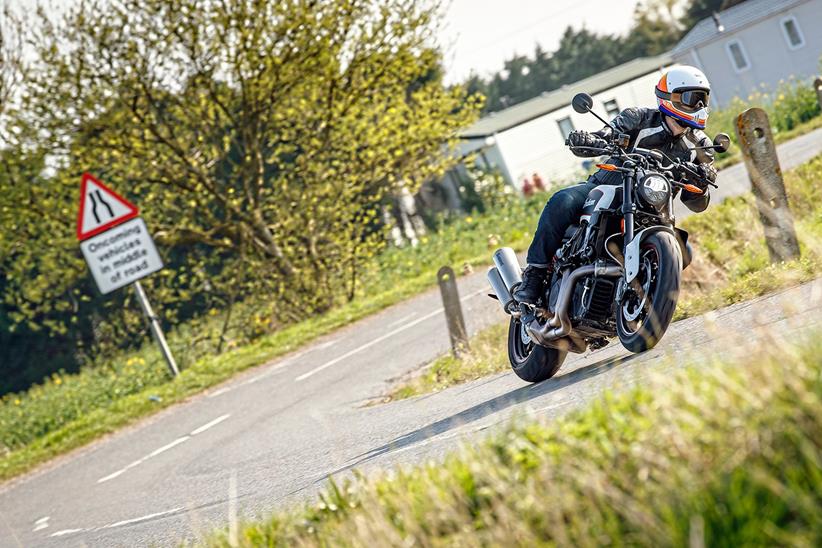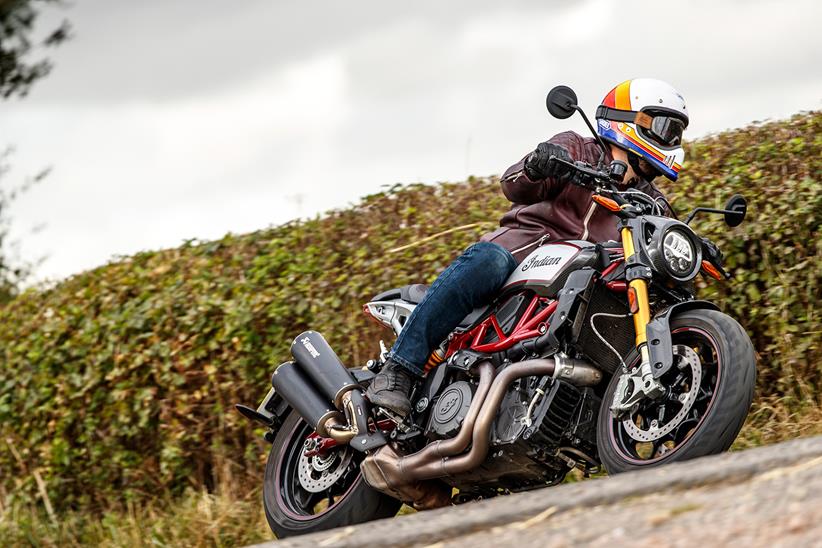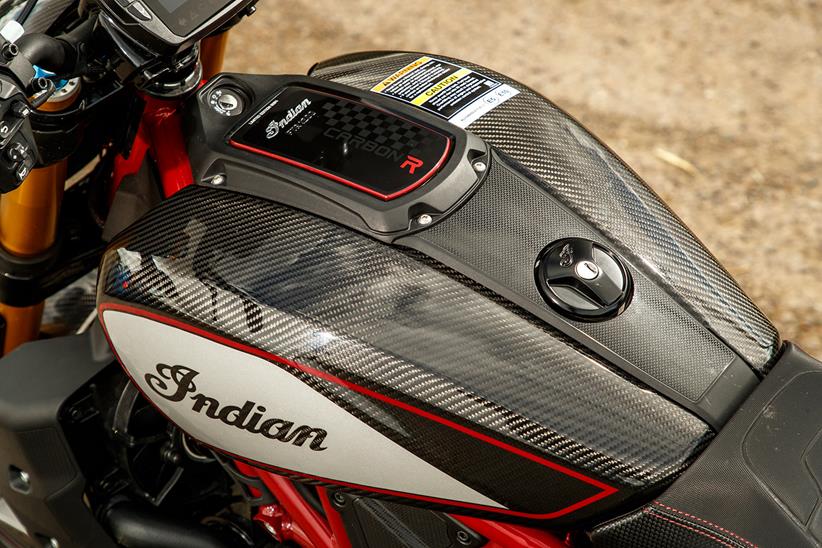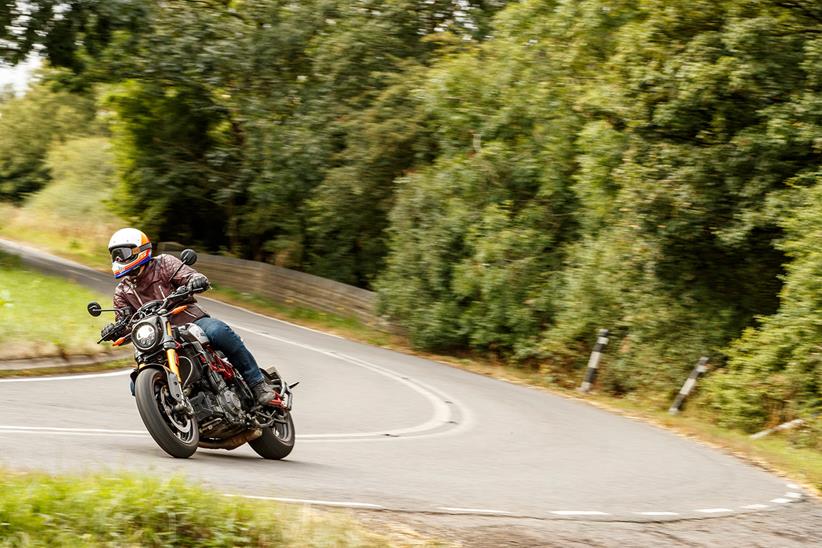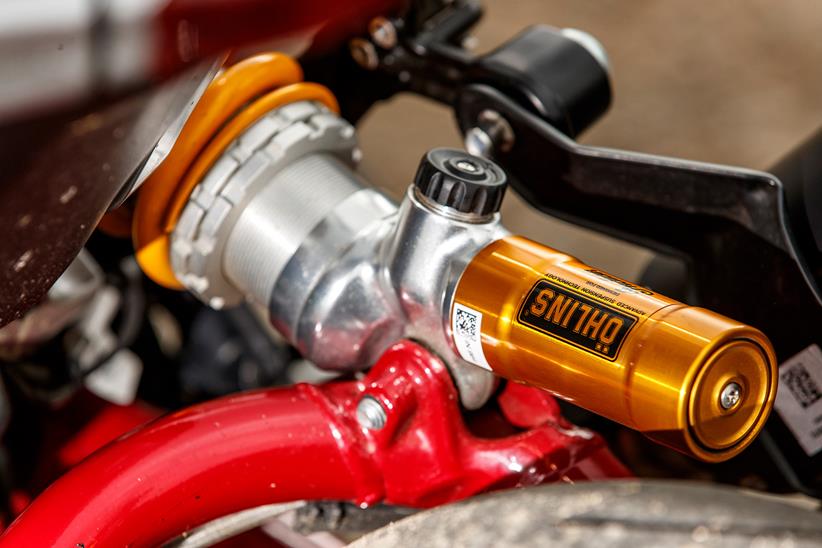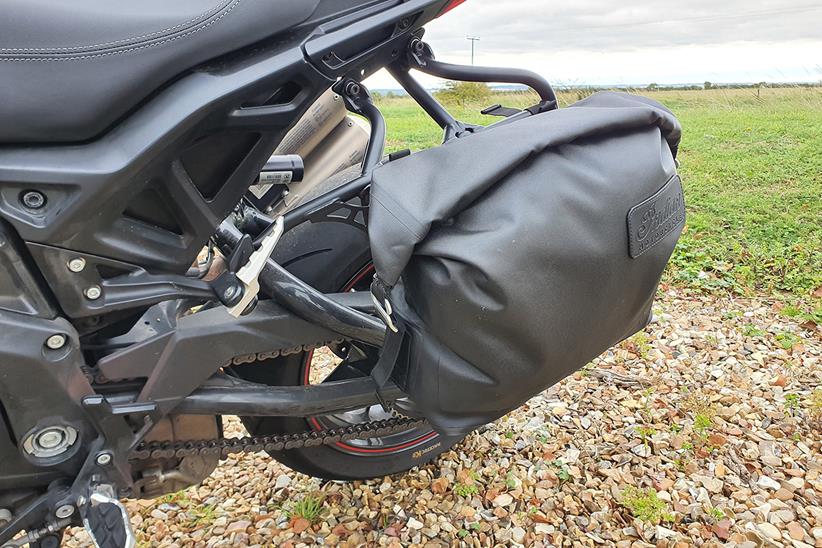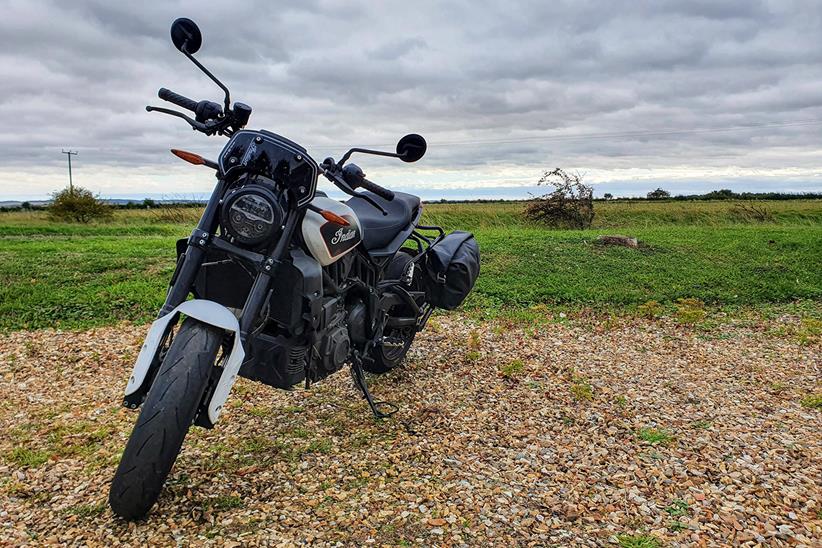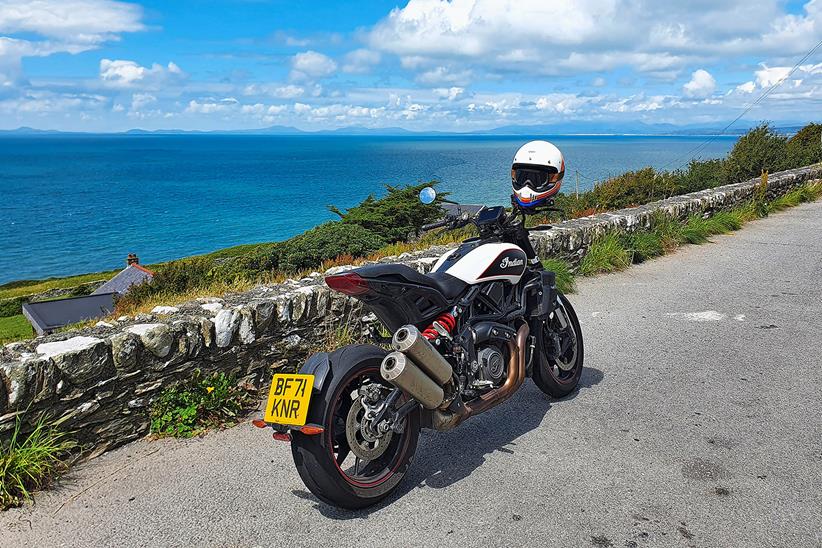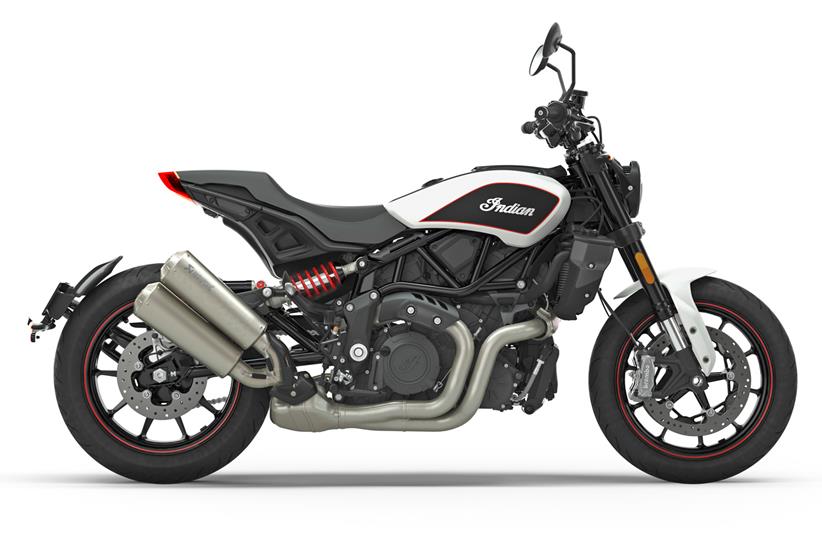MCN Fleet: Ben reflects on a fun-filled year of American muscle as he bids farewell to the Indian FTR S
The biggest compliment I can pay the Indian FTR S is that it has had me shopping around for loans. It’s certainly not perfect and some of its foibles are incredibly frustrating, but I feel more bonded with it than any bike I’ve ridden in years.
In order to work out why, my mind is cast back to my very first bike on the MCN fleet, a 2019 Honda CBR650R. It was a brilliant thing (so good I put almost 20,000 miles on it) and I look back on it fondly – but it was missing a certain something.
As I said back then, “Flaws and imperfections are the interesting parts of people and that’s true of bikes, too. And if all I wanted was ease, comfort and reliability I’d do the unthinkable and buy a car.”
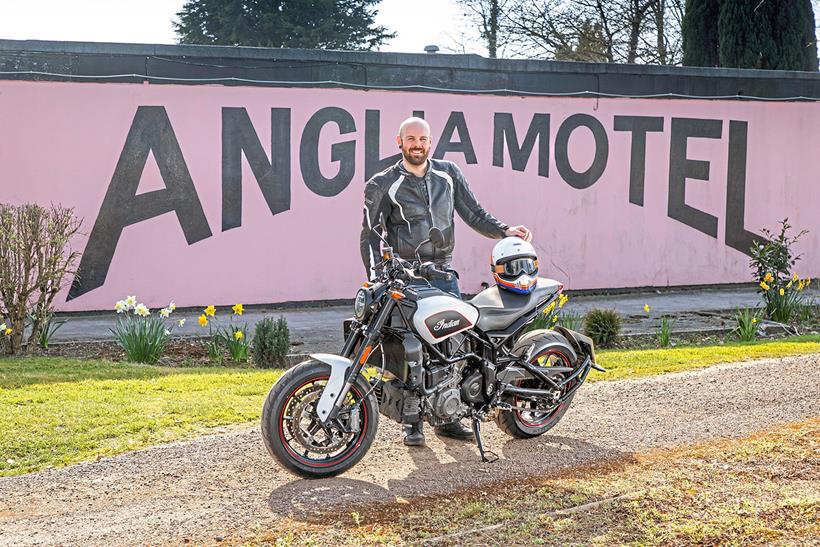
It’s my firm belief that the niggles and annoyances I’ve had with the FTR are precisely the reasons that I love it so much. Don’t get me wrong, I wouldn’t want to go back to the days of my early twenties; running my own bikes on a shoestring and playing starter button roulette before work every morning. But a compromise here and a design flaw there can give a machine added character.
Wrestling a big, long and heavy bike through a fast sweeper on a tricky, undulating B-road is far more satisfying than carving through it smoothly on a superbike.
And finishing a 500-mile day on a bike with no weather protection, carrying just what you can fit in a big rucksack, makes the beer taste better than doing the same on a full-dress tourer with more luggage space than a Volvo estate.
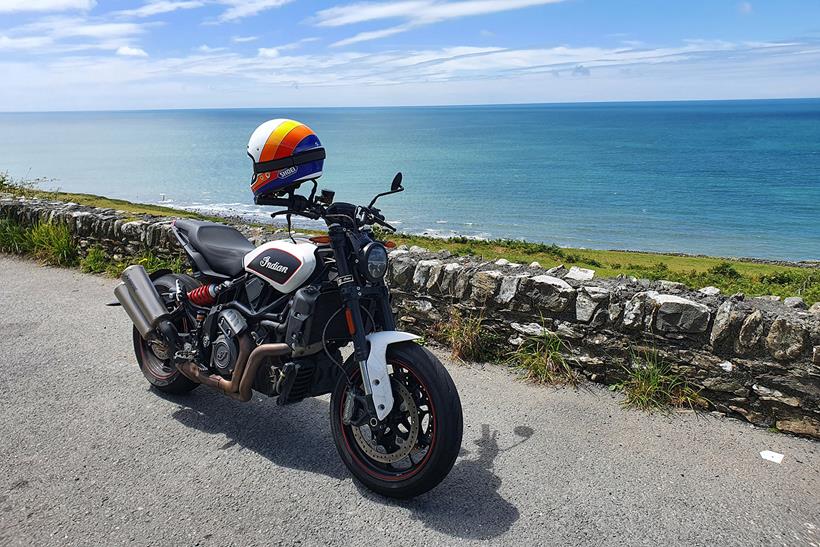
I’m not saying ‘I love the FTR because it’s rubbish’ because it’s certainly not. Its imperfections are just small compromises in an overwhelmingly pleasurable ownership experience.
The FTR looks the business, goes like a train, stops well enough and handles far better than it looks like it ought to. It’s also comfy over distance but has a sporty enough riding position to scratch your B-road itch when the mood takes you.
If Indian sorted the infuriating fuel filler pipe, put an extra few litres in the tank, finessed the cruise control and added a satnav to the TFT dash, the FTR would be a better bike… on paper. But would I like it any more? I doubt it. Apart from that fuel filler neck thing, they should definitely fix that.
Watch Ben’s Indian FTR S long-term test round-up video here:
Jump to
- Update 1: Love at first ride
- Update 2: Ben takes the Indian FTR S on a European road trip
- Update 3: A trip to Wales brings a chance to stretch the Indian’s legs
- Update 4: Is the Indian FTR Carbon worth the money?
- Update 5: Ben adds some extras from the Indian catalogue
- Update 6: Indian FTR S hits and misses
- Update 7: Human kindness isn’t dead
- Update 8: How does an Indian FTR S cope with a UK winter?
Update eight: Indian winter – How does a stripped-down naked stunner designed for summer fair in the cold?
Published 15.02.23
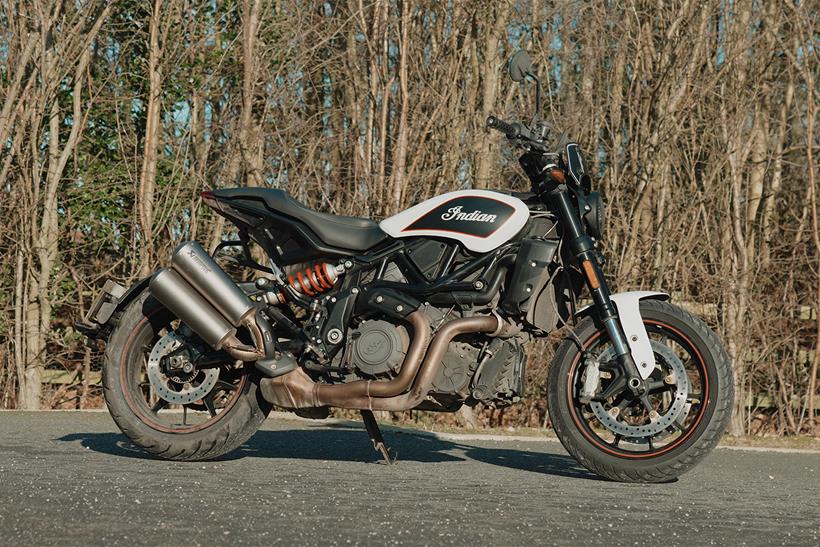
Few people who buy an Indian FTR S (in the UK at least) are likely to run it through winter. In fact, if I owned this FTR S, I would’ve tucked it up in the garage last October to suckle at its trickle charger.
Unfortunately for the MCN fleet FTR, that’s not how longterm tests work and so I’ve been cajoling the bike into life in sub-zero temperatures and forcing it out onto the filthy, grit-encrusted roads.
The first reason I hate doing this is everything to do with my ego and nothing to do with the bike. It feels strange to get kitted out head-to-toe in textiles to climb aboard such an achingly cool roadster.
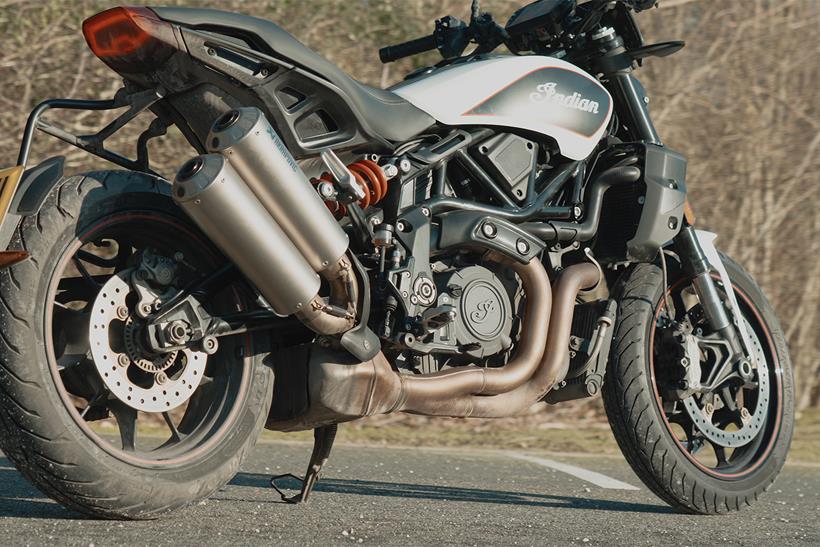
The good people of the Indian design department clearly put a lot of care and attention into getting the details right – from the logos embossed on the cylinder heads and crank cover to the faux pinstriping on the tank – and they didn’t factor in me sitting there like a Gore-Tex elephant in the middle of it all.
Bit parky
Moving on from my vanity to issues of practicality, the FTR’s complete lack of weather protection can really be felt when the mercury drops. Wearing as much kit as I can squeeze on and moving with all the grace of a toddler in a ski suit, the battering of winter wind can still be felt.
Even with my flattrack-style flyscreen added, which deflects a little of the wind off my chest and calms the chaotic airflow created by the headlight, bars and controls, the barrage cannot be tamed.
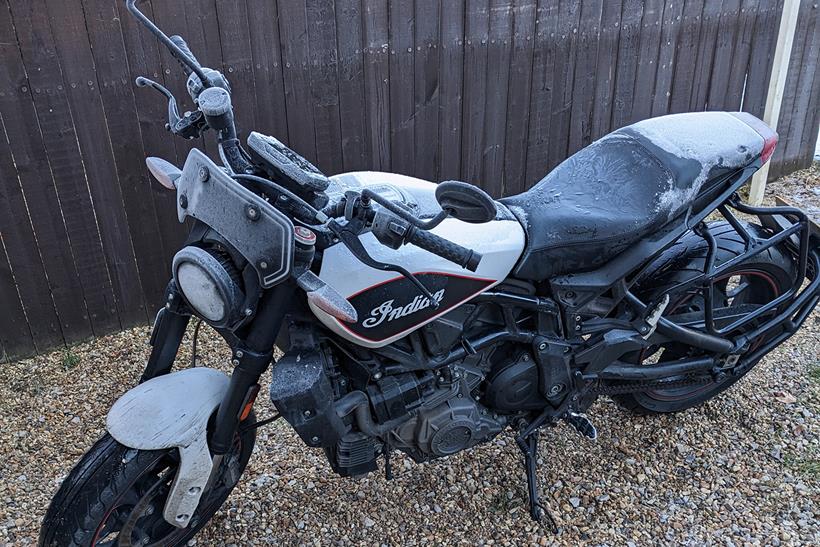
Prolonged stretches of dual carriageway become nigh-on unbearable. The cold creeps in around the tank and up your front or spools around your backpack, seeking out any imperfect seam or misalignment of kit layers.
In warmer weather, I enjoyed the FTR’s near-complete nudity. Being in the wind creates a sensation of speed and drama that you don’t always get at road speeds on more aerodynamic models. But now I’m not so enthused.
Add rain into the mix and you’ll lose your sense of humour very quickly, not least because the FTR’s stylish lack of a rear mudguard means that your back is constantly sprayed with whatever muck you ride through on the road. My backpack and the back of my jacket has never been so filthy.
Battling those cold starts
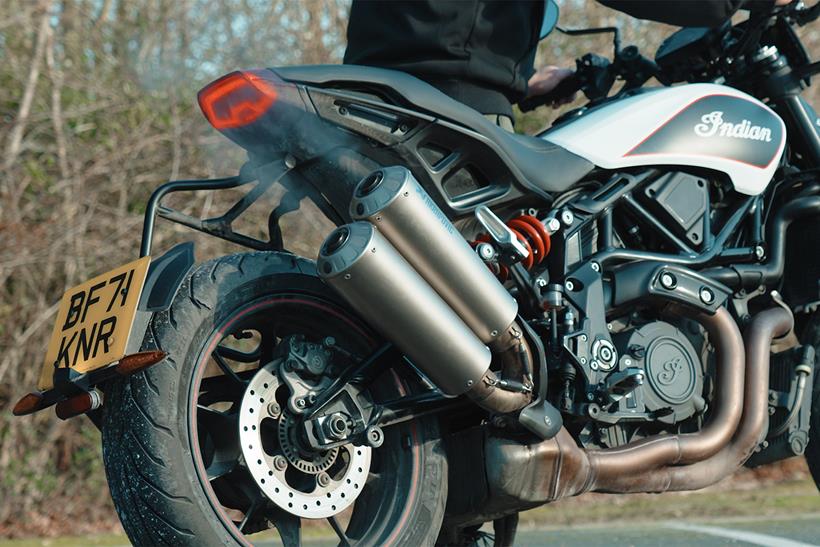
The FTR may feel a bit out of its depth in a UK winter, but it has never failed to start whatever the temperature gauge on the dash shows. I have made it to the third press of the starter button before the engine finally burbled into life on a particularly cold morning – I was starting to get that sinking feeling – but it did fire up.
With the slippery roads I’ve dropped from the ‘Sport’ throttle mode to ‘Standard’ as the aggressive response was making it too easy to spin up the rear in the cold.
The traction control caught it every time but it’s a better riding experience to switch the riding mode. The dash also got stuck in its daytime mode one evening but switching the bike off and on again sorted the problem so I assume it was a gremlin brought on by the cold.
Update seven: Human kindness isn’t dead – Yet another FTR fuellish mistake
Published 23.01.23
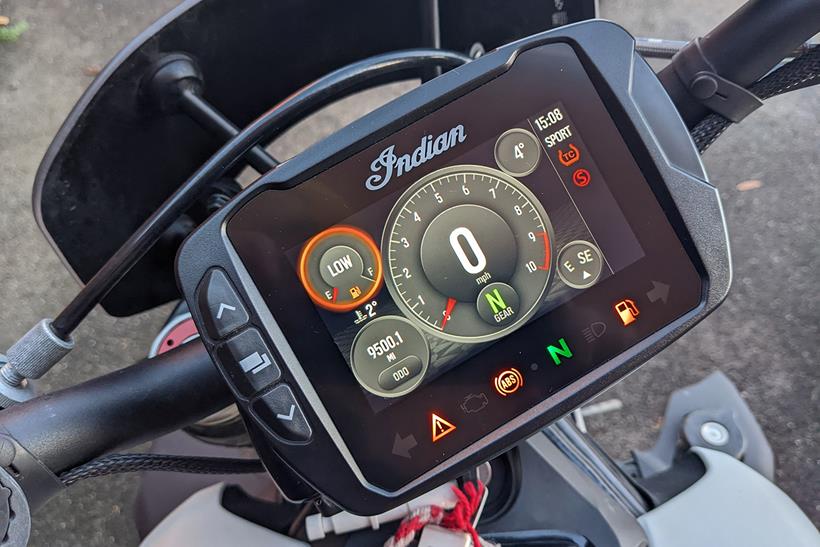
I’ve made no secret of my disdain for pretty much everything petrol-related on the Indian FTR S. From the pessimistic gauge and awkward filler neck to the tank size, range and MPG figure, it’s the most annoying part of an otherwise brilliant bike.
The latest instalment in my ongoing fuel saga came as I headed home from the office on a chilly but bright December day. I’d ridden just shy of 118 miles on the current tank of fossil juice and as I was just five miles from the nearest Tesco garage (Clubcard points go a long way in a cost-of-living crisis) I sailed confidently past a Shell garage safe in the knowledge that I’d previously squeezed 130 miles between fill-ups.
The problem is that because of the daft gooseneck of plastic inside the filler cap, it’s really difficult to work out if you’ve actually brimmed it. I’ve rolled off garage forecourts with a predicted range of anything between 136 and 95 miles before.
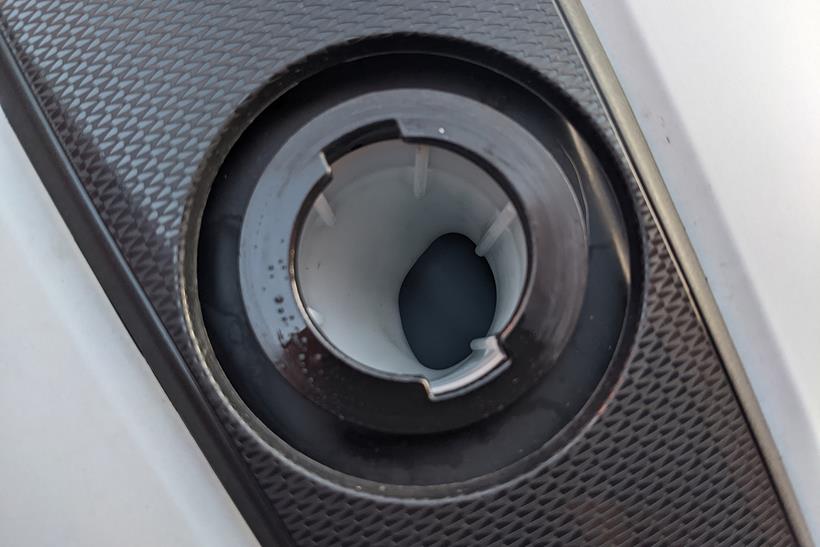
And so, just three miles later I got the first dreaded cough from the engine before grinding to an inexorable halt in a very exposed and dangerous part of the A47. ‘Oh deary me,’ I thought – or words to that effect. A little further up the road I could see some houses so I stashed the bike as well as I could and headed off on foot to knock on some doors.
The first was answered by a frightened-looking teenage girl who had no fuel and quite rightly became suspicious when I asked if any of her neighbours have petrol lawnmowers.
The second was empty and so I headed for the third and final option. As I approached I could see a gentleman plugging Christmas decorations into a junction box. He didn’t have any fuel either, but immediately offered to transport me to the garage.
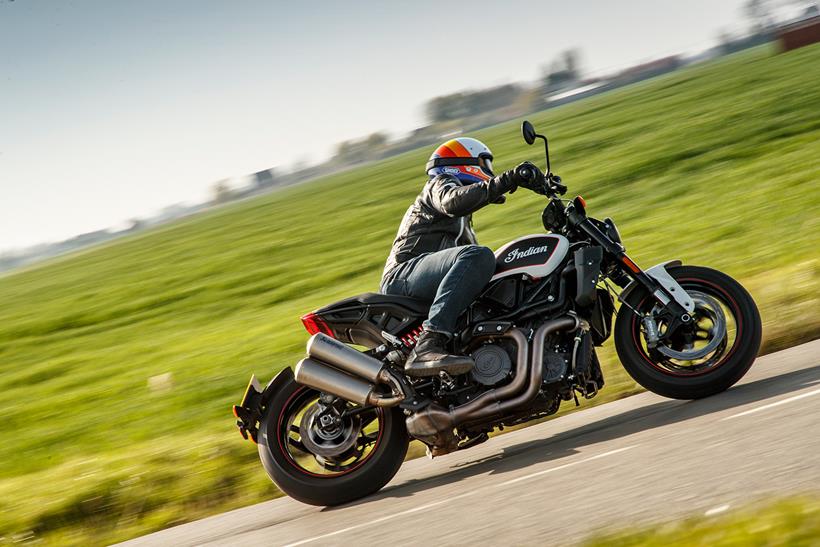
It’s easy to feel as though the world is an unfriendly, selfish and dangerous place but life with a motorbike so often proves that feeling wrong. Almost every time biking has left me vulnerable thanks to flat tyres, snapped drive chains, damp sparkplugs or simply running out of fuel, someone has offered to help out.
And if you take a look at the number of charity rideouts and fundraisers that take place at the festive time of year, you can see that we bikers are a pretty decent bunch, too.
Update six: Charting the hits and misses of the Indian FTR S
Published 06.01.23
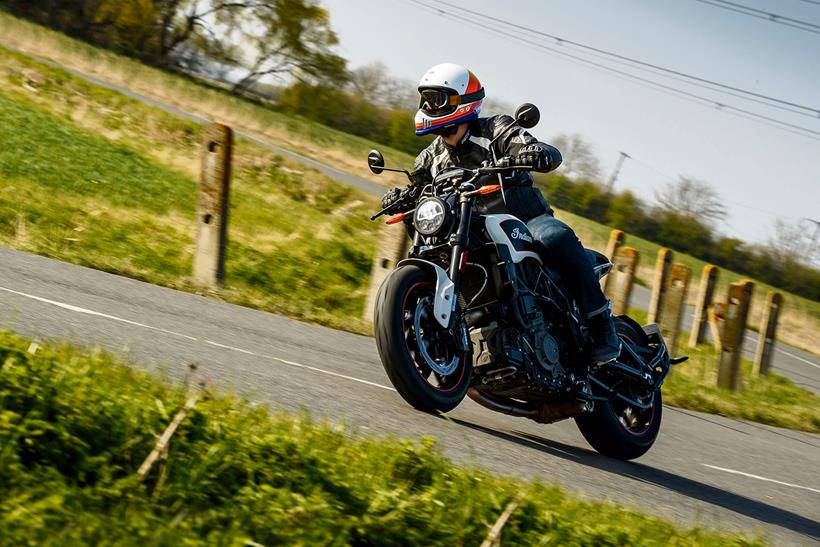
After almost 9000 miles onboard the Indian FTR S, Ben delves into what’s hot and what’s not.
Hit: It’s a looker
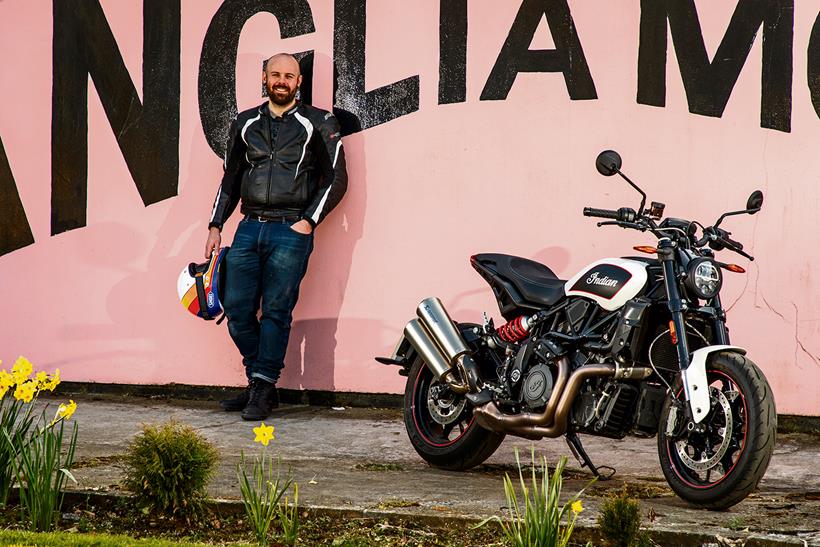
Whether you like aggressive muscle, a sporty edge, dirt bikes, retros, roadsters or cruisers, there’ll be an element of the Indian FTR’s styling that suits you.
From the charm of the single, round headlight and fairground pinstripe tank to the sporty rear wheel jutted out on its Meccano trellis swingarm or the scaffold pole downpipes that squirm across the bike’s flank to those barking twin end cans – there’s a lot to take in. And I love it.
I even stopped for a pint at the end of a Sunday blast around Norfolk this summer and parked where I’d be able to see the bike from the beer garden – not for security reasons, but so I could admire it.
Hit: That engine
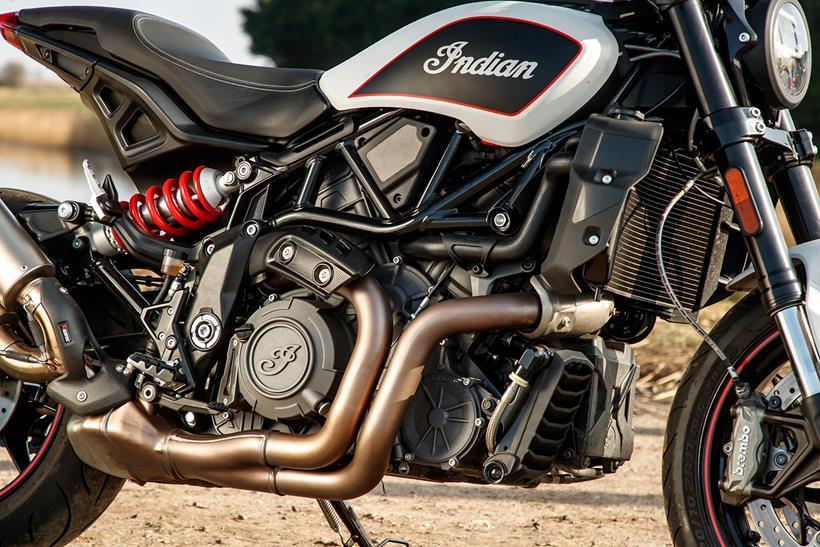
I don’t think even the staunchest sceptic could fail to enjoy the 1203cc V-twin. To use a bike review cliché: it is a peach. In fact, it’s a perfectly ripe peach eaten directly from the tree on a summer’s day.
From the second it blips into life on the starter (sometimes on the second try if it’s particularly cold) it creates a scintillating theatrical mood. Even with the S model’s Akrapovic pipe fitted, the engine noise is more of a meaty rumble than an attention-seeking bark but it’s loud enough to make me feel a little self-conscious on early rides.
It’ll burble along in fourth through a 30mph zone, but it’ll also scream past the national speed limit in third (probably, I wouldn’t know officer).
Hit: Classy dash
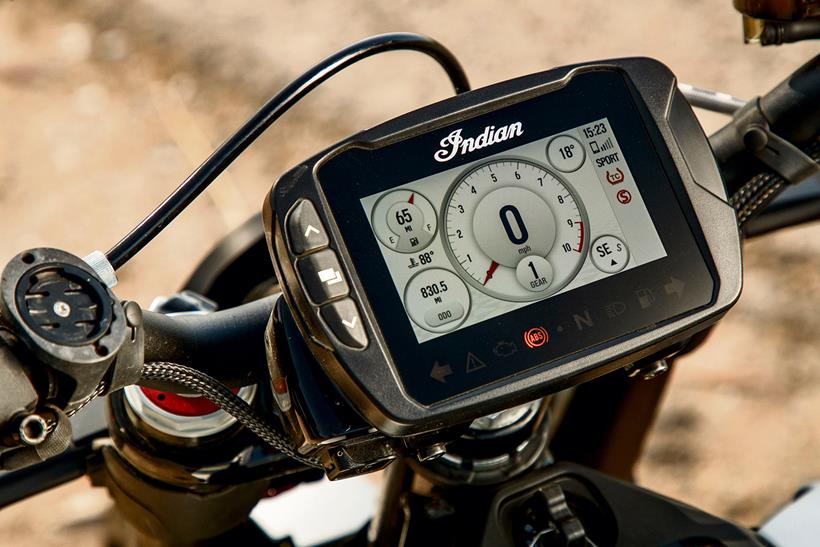
Maybe it’s my age, but I’ve come to really appreciate little creature comforts like a well laid-out dash and the touchscreen TFT on the FTR is just that.
I use it in the analogue clock mode, which I find easier to read, and I think it’s a perfect blend of style and practicality.
You can hook your phone up too and get text messages and call notifications on the road – I don’t know why you would, but the option is there – and if you have a headset you can make and receive calls and control music.
The touchscreen itself is easy to operate and even works through gloves but there are more traditional controls on the bars as well.
Miss: Short range
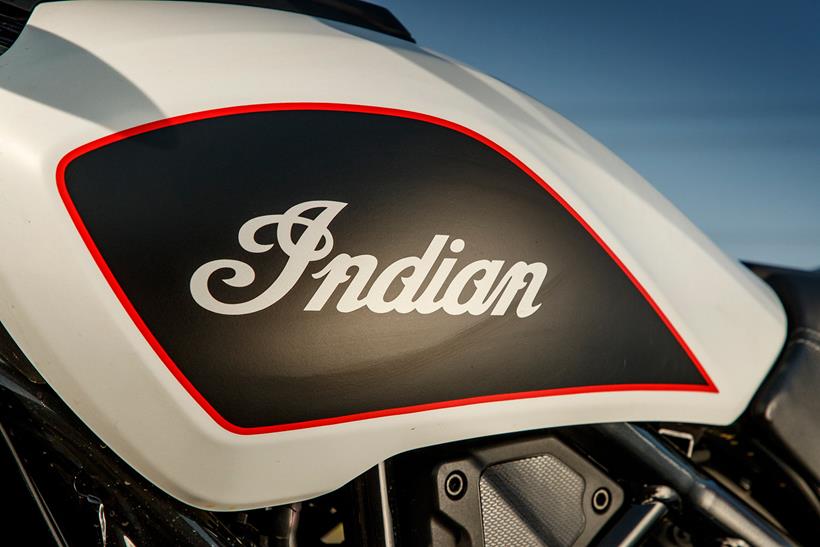
The tank isn’t big enough and it’s awkward to fill. I could cope with one of these flaws in isolation. The range isn’t actually any worse than I’ve lived with on other bikes but they could be filled in seconds and the FTR takes minutes of painstaking and deft nozzle work.
This is an issue Indian say they are working on but that doesn’t help me. If I only had to worry about it every 200 miles it wouldn’t be such an issue but the range is only about 125 miles.
Miss: Dubious finish
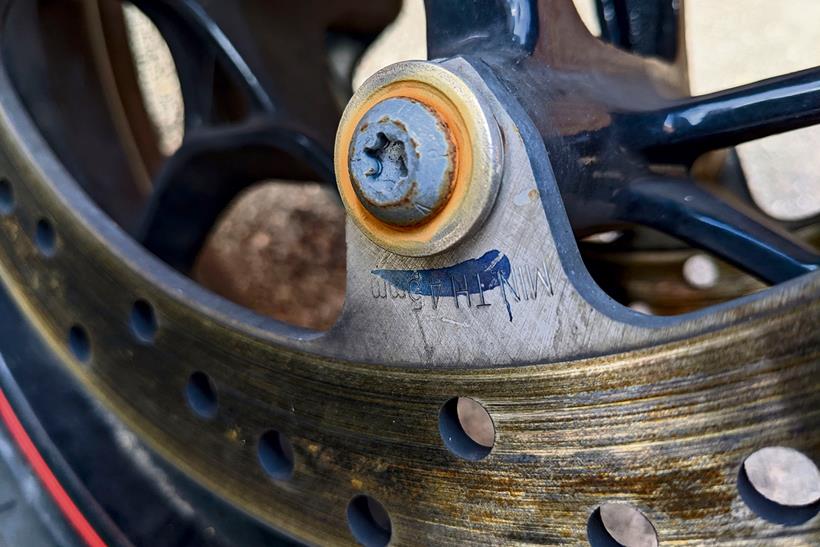
The weather had only just begun to turn at the time of writing, and the council hadn’t whipped the covers off the gritters – but some bits of the FTR are looking a little furry.
It’s nothing too serious – front brake disc, a couple of bolt heads – but I’d be concerned if I was running it all winter. I appreciate not many riders will do this, but I don’t think a £15k bike should go rusty at all. It’s frustrating as the fit and finish feels so high in general and is much better than I anticipated.
Servicing and consumables
For a torquey, powerful and heavy V-twin, the Indian FTR is surprisingly gentle on its tyres. I got a puncture in the OE Metzeler Roadtec rear so I swapped to a fresh set of Racetec K3s (it was summer after all). I thought these would need changing after a few thousand miles, but they’ve actually lasted around 6000 and the rear is only just now down to the wear indicator.
The first service was completed at 500 miles and it’s due back for its second in another thousand. It’s not needed any fluids topping up between time and the brake pads are still going strong.
Update five: High time for something extra – Ben raids the Indian catalogue to boost comfort and luggage capacity
Published 13.12.22

As much as I love the FTR S (and I do, I really do) there’s no denying that it’s a bit blustery to ride above about 50mph. In fact, I struggle to think of another bike I’ve ridden that’s quite so exposed to the elements. For engaging stretches of road, it’s not an issue.
As with all nakeds, to a greater or lesser extent, you get a heightened sensation of speed and involvement from the whoosh of air around you. But commuting along the A47 in single figure temperatures soon turns that exhilarating whoosh into a tedious and all-encompassing barrage.
To address this issue without destroying the look of the bike, I ordered Indian’s low wind deflector (£223.80) and mount (£173.72), which has a subtle flattracky sort of a look to it rather than the bike courier chic of the bigger options.
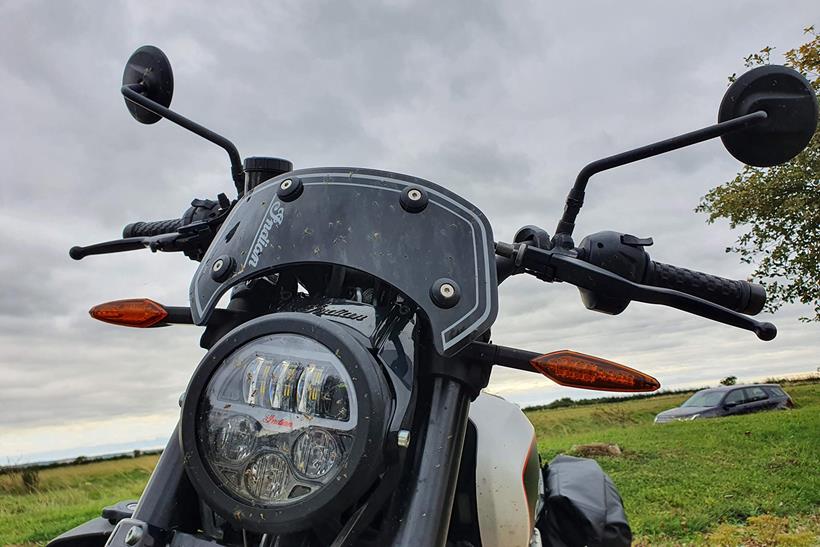
Having fitted the screen (a simple job that requires only basic tools) I set off on a test ride. I was initially disappointed. Riding through town it made no difference at all and so I was sceptical that it would be effective at speed.
But actually, it only comes into its own once you get onto 60 and 70mph roads. The screen is only the same height as the bike’s TFT dash so it doesn’t really take any extra wind off your chest or face – but it’s wider and seems to have a calming effect on the air. Turbulence is greatly reduced, making longer trips at speed much less tiring.
I could doubtless improve this further with a bigger sheet of Perspex, but I have no desire to look like Erik Estrada from CHiPs.
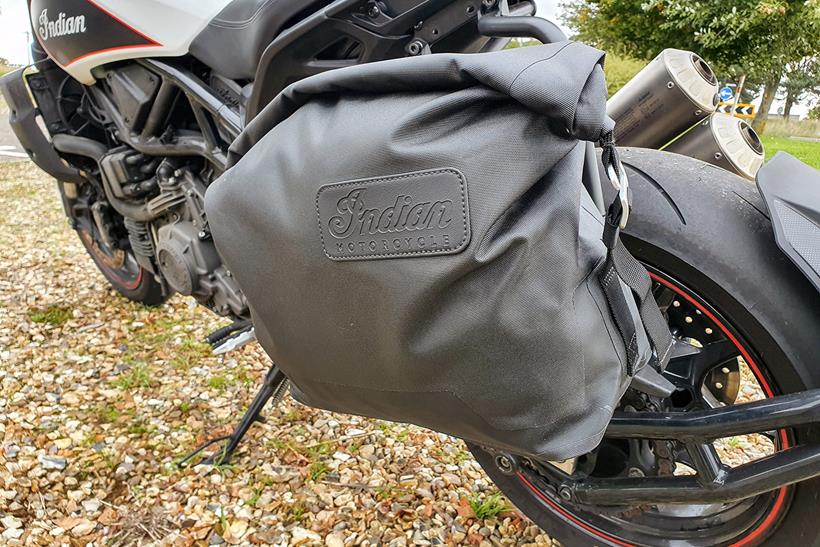
While I was in the business of boosting the FTR’s practicality, I also ordered the single-sided luggage rack (£186.50) and side bag (£267.32) from Indian’s extras catalogue.
I’m a devout rucksack wearer on any bike I ride, but it’s sometimes useful to have a little extra luggage capacity or have the option to ditch the sack for a less cumbersome ride – especially when it’s hot.
The rack is really easy to fit with a few bolts and is a sparse enough design that it doesn’t ruin the FTR’s aesthetic. The bag itself is easy to clip on and remove and with a simple rolltop design it’s completely waterproof, too. Its all-black design is subtle doesn’t hamper filtering, either. A great addition.
Update four: Something cool and carbonated – Ben sees how the other half lives with top-spec Indian FTR Carbon
Published 17.10.22

One of my favourite things about the Indian FTR S is that it handles better than its looks lead you to expect. On paper, a long, low heavy American bike shouldn’t want to go around corners but the FTR – with its sporty riding position and 17in wheels – loves it.
Admittedly, you do have to grab it by the scruff of the handlebars to make it change direction quickly, but that’s all part of the fun of riding an inappropriate machine at pace.
But when I discovered that our sister publication Bike magazine had an FTR Carbon on their test fleet, I got straight on the phone to arrange a temporary swap. The carbon weave on the tank, headlight cowl and front mudguard is mostly for show (the bike is a mere kilo lighter than standard) but what intrigued me was the shiny, gold Öhlins suspension.
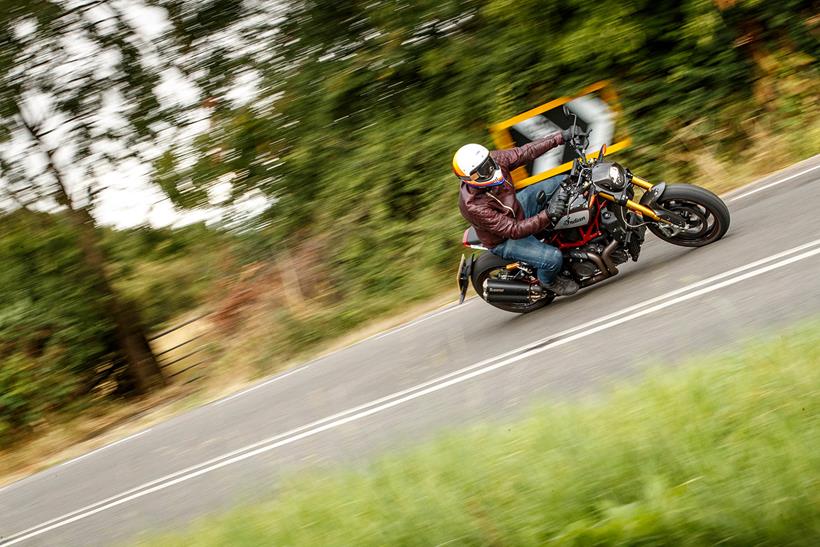
Mind games
Unless I’ve developed otherworldly weight perception, the sensation of lightness I felt when I first picked the Carbon off its sidestand was all in my head.
Either that or it was due to the fuel gauge needle being buried deep in the red. Either way, I don’t think it was down to the true weight of the bike. Once rolling, however, the Carbon does hold its mass better than the S.
Where the standard bike needs cajoling – or coercing – into a tight corner, the Carbon can be placed with precision. Likewise, the S can’t wait to get you back upright at corner exit and requires a little inner bar pressure to hold its line, whereas the Carbon holds whatever angle of lean you require until you’re ready to stand it up.
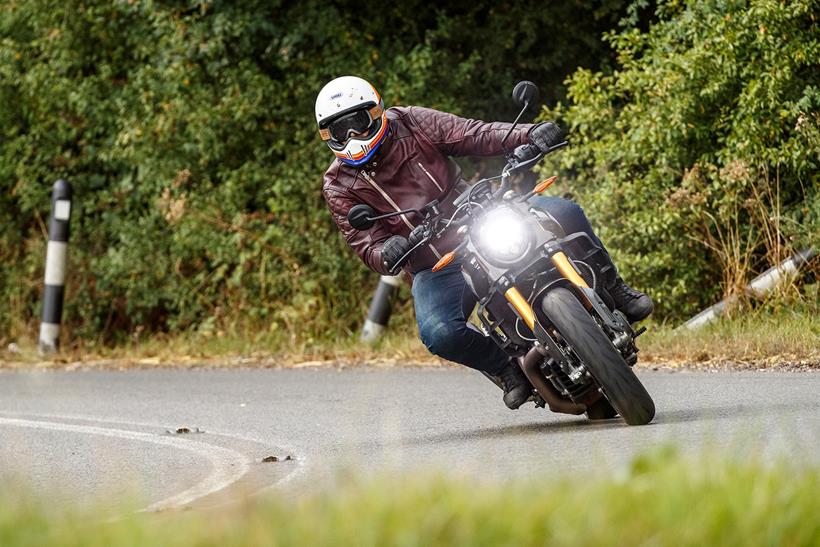
You chuck the S into a corner but you place the Carbon. There is less fork dive on the brakes, too, with the Öhlins holding everything flatter and allowing you more braking pressure before the ABS cuts in.
Eye of the beholder
I appreciate a nice bit of carbon weave as much as the next man, but I’m not sure the FTR is the right place for it. I love the clash of old-timey Americana styling with modern elements on the bike but the carbon finish on the top-spec edition is a little crass – especially combined with the ‘Premium Seat’, which would look more at home on an MV Agusta.
The red frame and gold fork combination is a winner though and it’s not a bad looking bike by any means, just a tad ostentatious.
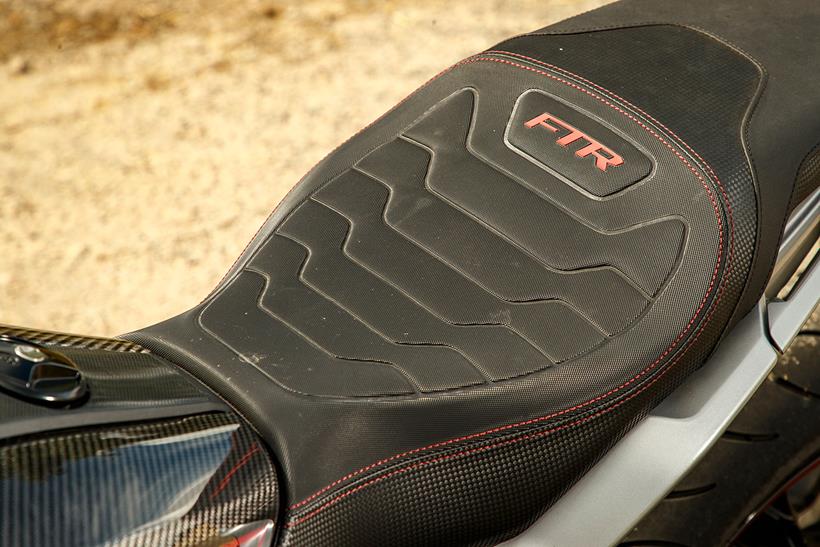
At what cost?
The Carbon FTR does handle better than the S, but does it handle £2000 better? For my money, no. I’m so smitten with my long-term test bike that I’ve been putting serious thought into buying one but I’d go for the S.
Part of the fun of it is slinging it into the corners and having a bit of a wrestle on your hands. I’ve never wished for better suspension. So, I wouldn’t spend an extra £2k to get it – especially when it comes with a load of added chintz.
Bafflingly, if you add the Öhlins to an S to avoid the carbon it’ll cost you £3430 so if you’re desperate for some Swedish bling, the Carbon is incredible value!
Update three: Exploring B-road Wales – Trip across the border brings a chance to stretch the Indian’s legs
Published 22.09.22

Since I took on the Indian FTR S as a long-term test bike I’ve been inundated with emails, letters and phone calls begging to know what it’s like for riding with two Porsches and a Mustang in Wales. Ok, that’s not true. And as consumer journalism goes, I’ll admit, it’s pretty niche. But taking the Indian on a ‘driving’ trip with some of my car-loving mates did give me an opportunity to see how it handles the twisty stuff when the pace is… spirited.
The rolling hills and plunging valleys of the mid-Wales coast are the perfect playground for just this kind of exploration but before all that we needed to travel almost the full width of England and Wales and had already decided that the M6 was off limits due to being dull.
Some A and B-road shenanigans and mild roundabout tomfoolery revealed that the bike was more than a match for the four-wheelers (in the dry, at least) but after more than five hours on the road I was noticeably more dishevelled than the others. They were surprised that a bike that looks like the Indian handled as well as it did – going so far as to say it looked weird leaning over.
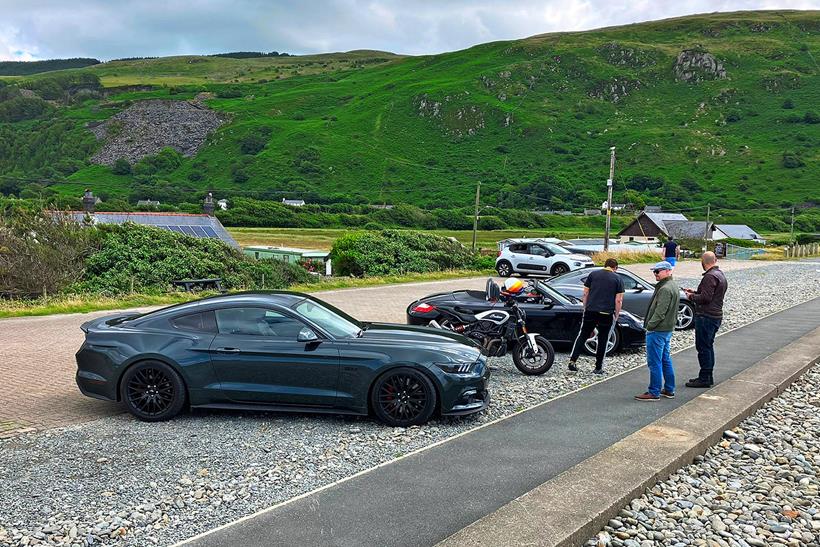
We celebrated our arrival in Wales pretty hard and I lost the second day of the trip to a hangover. So, I was looking forward to a proper ride on day three. One of our group lives in Wales and knew a way to link up some truly excellent roads including a dramatic stretch of coastline that put me in mind of the Pacific Coast Highway in California.
What did I learn?
Firstly, I may be able to drink like I could in my twenties but I definitely don’t recover as well. Secondly, and more importantly, the FTR has an insatiable hunger for twisties. On tricky roads I didn’t know, taking a wide and late corner entry, the big Indian stays poised on the front brake before tipping in effortlessly once you can see through the apex.
There’s plenty of engine braking to pull you round the corner off-throttle but not so much that you have to barrel in like you’re on a racetrack. If you have carried a little too much speed, a dab of rear brake pulls you in yet tighter without troubling the ABS.

Very bumpy sections betray the firmness of the suspension and it can crash through the most severe undulations but it’s not so bad you can’t ride around it and it’s the only time the weight can really be felt – which at 233kg is astonishing.
Update two: ‘Asking for the Czech’ – Ben takes the Indian FTR S on a European road trip
Published 28.06.22
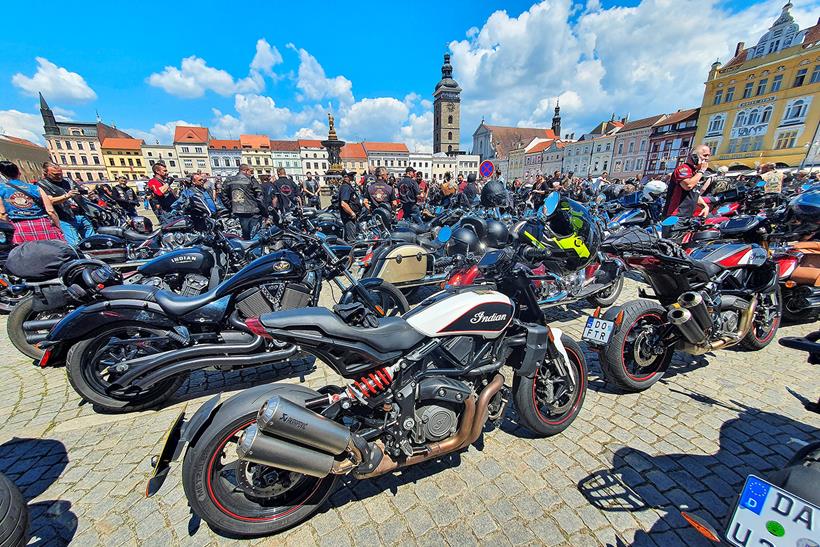
One of my greatest pleasures in life is to pack up a few belongings and ride somewhere far away on a motorbike. You can keep your Sunday blasts, trackdays and bike nights – I much prefer to explore somewhere new at a brisk but relaxed pace.
There’s something incredibly zen to building a rhythm on the road and committing yourself to a whole day in the saddle. Once you shed the imperative to cover ground quickly and submit to the journey rather than the ride it’s hard not to be seduced by motorcycle touring.
So, when I heard that there was a festival for Indian riders to be held in Budweis, Czechia, I leapt at the chance to see how the Indian FTR S would cope as an overlander.
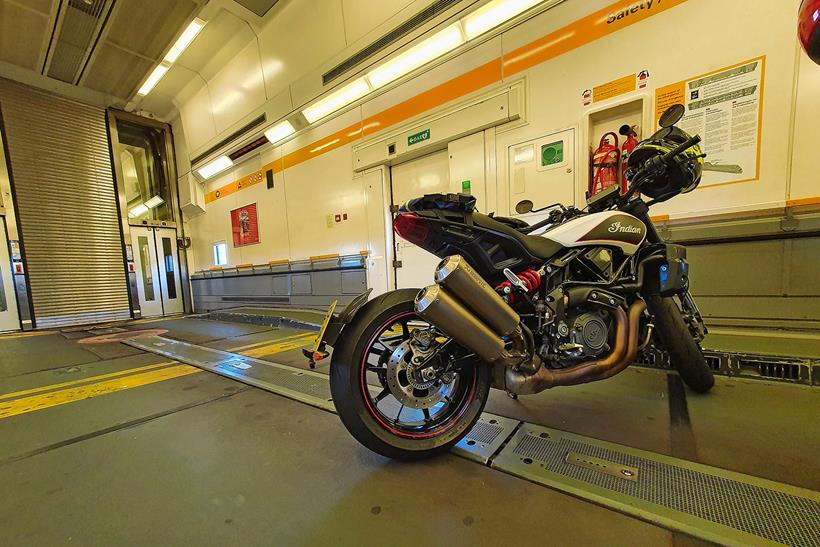
Due to time constraints I had to use the motorway there and back with a chance to explore a little of Czechia while I was there. I planned a route that would take two days, using Cologne as a stop-over, stuffed a few pairs of pants in a rucksack and headed for Folkestone.
Despite leaving home with an almost full tank, it felt like no time at all before I was pulling onto a petrol station forecourt. This was a feeling I’d get to know very well over the coming days…
Range anxiety
I rode off Le Shuttle in Calais to glorious sunshine and sailed past the first few service stations on my way towards Brussels. By the time the fuel light came back on I felt ready for a comfort break anyway. But unfortunately, the next sign I saw had a picture of a fuel pump next to the text ‘27km’. Merde.

Once the FTR’s fuel light flashes the range figure on the dash is replaced by the word ‘low’ and you have just the red (digital) needle on the display to go by, which I don’t really trust, so I’ve never pushed it. Even in my arithmetically challenged brain I could work out that 27km was under 18 miles and this felt borderline achievable.
It’s not like I had any choice by this point anyway, so I soldiered on. By the time I reached the 5km board I was drafting behind a lorry and trying not to move the throttle at all. I eventually crept into the services presumably running on the idea of petrol rather than any actual liquid – but still moving under my own power. Phew. Lesson learned, I would not take another fuel risk on the trip…
Comfort and style
Despite its total lack of wind protection, the FTR performed wonderfully as a long-range bike. I generally rode at 130kmph (a little over 80mph) on cruise control and found this plenty to make progress but not so fast that I burned myself out in the wind.
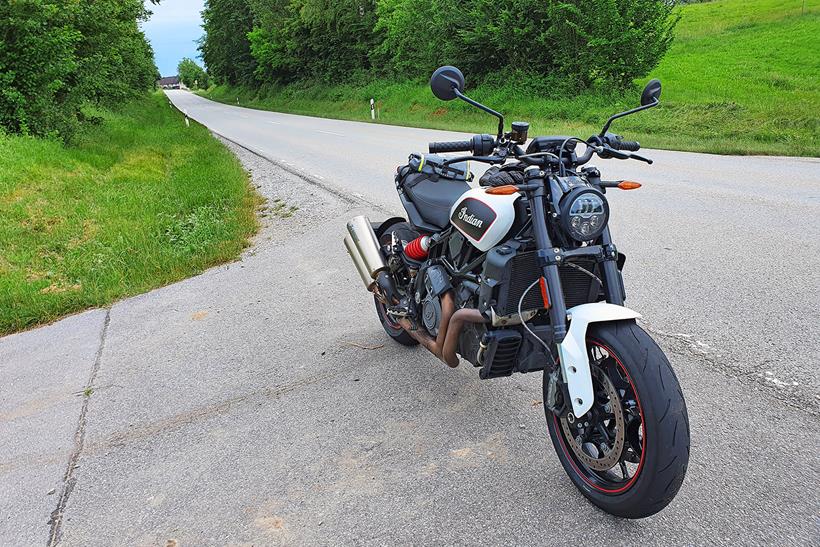
I couldn’t resist stretching the FTR’s legs on the German Autobahn and discovered that the top speed of 135mph can be reached quickly but then you hit the limiter like a brick wall.
I was apprehensive that spending four days on the motorway on the FTR would leave me deaf, dishevelled and less enthusiastic about the Indian. But actually, it was comfortable, capable and entirely feasible as a touring option. If you added Indian’s small wind deflector you could probably improve it even more.
Fuelling around
Across the 1800-ish miles of the trip I refuelled 18 times, using 80-litres. So, I averaged just 100 miles per 11-litre tank-full. That’s a rather paltry 41.2mpg but not too bad for a 1200cc V-twin.
The tank size is more of an issue than the economy and holds you back when you’re on a long trip. The fuel filler neck is also incredibly annoying and makes refills excruciating, but I’m assured by Indian that future models will have the problem addressed.
Update one: It’s a case of love at first ride for Ben and the Indian FTR S
Published 28.04.22
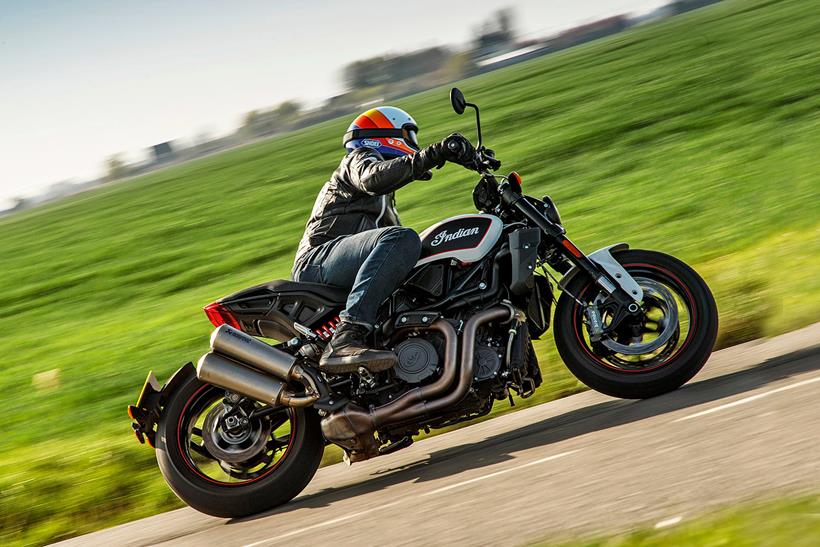
The last few weeks have felt like the start a promising relationship. I’m in that part where you play down how excited you are to your friends and family in case it doesn’t work out and you look like an idiot but really you think you’re in love and you want to shout it from the rooftops.
The thing is, I know there’s a honeymoon period when you ride a new motorcycle and I don’t want to jump the gun, but after putting the first thousand miles on the Indian FTR S I’m starting to look for insufficiently secured fire escapes I could scale and I’m warming up my voice.
It shouldn’t come as a complete surprise that I like this latest version of the FTR, I rode the previous model (before it dropped the 1200 from the name) and my only issue with it was that it felt a little loose on its flattrack-style tyres and 18/19in wheels.
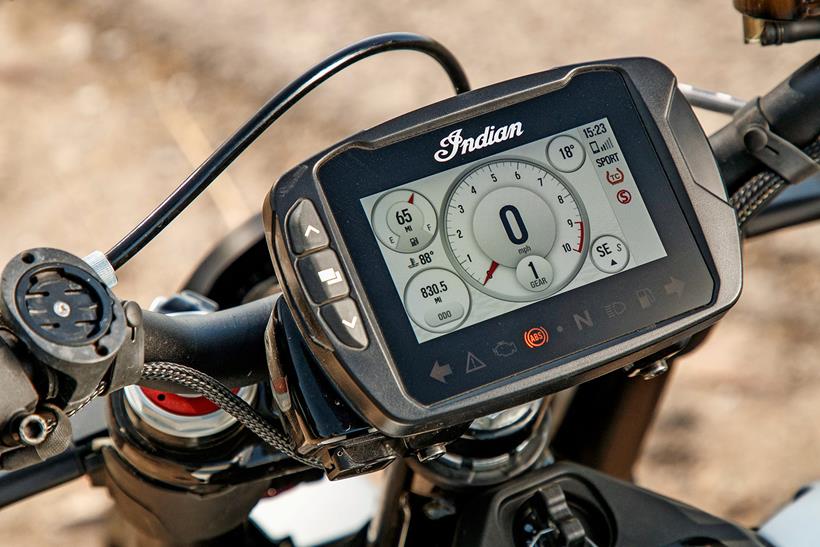
The new bike comes with Metzeler Sportec M9 RR-shod 17in rims which means the handling is vastly improved. What’s more, the rear is a fatter 180-section profile that copes better with the Indian’s liberal slathering of V-twin torque.
Thinking of the ex
I thought on the back of last year’s Kawasaki ZX-10R that the FTR would feel lumpen, flabby and loose (or is that the tester?) but I can’t believe how wrong I was. There’s no denying that it’s heavy – 233kg claimed at the kerb – but once you’re rolling it wears it really well.
The riding position is poised rather than sporty with upright bars and the pegs slightly behind your hips. The riding experience isn’t a million miles away from something like a Yamaha MT-09, but I know which one I’d rather look at in the garage.
But by far the biggest surprise came after the first service (oil change and check over at 500 miles) when I could start exploring the upper end of the rev range. As a big fan of the way V-twins deliver their power I had been merrily rolling around at half throttle until this point, enjoying the visceral growl from the end of the Akrapovic twin cans.
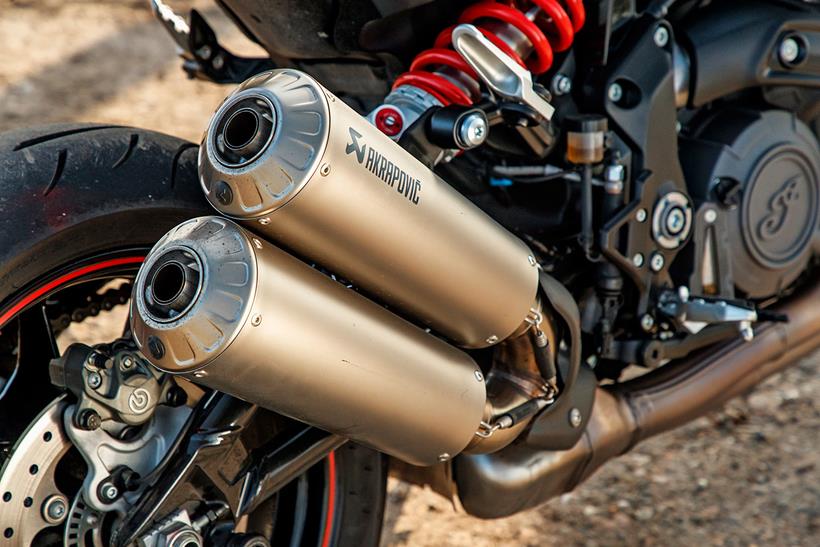
There’s no need to change down from sixth gear to nip round traffic above about 45mph, you can just surf round on an oceanic wave of torque. But I was pleasantly surprised – delighted in fact – to discover that when you turn up the wick and chase the redline the FTR is an absolute rocket.
The fly in the ointment
Even the most perfectly matched couples can squabble at times and it has to be said that I’m not loving the FTR’s 11-litre tank. Every time I ride it, I have to allow time for a fuel stop. I live around 45 miles from MCN Towers and so I either need to fill up just before I get home on the way back or get home on the fuel light and head directly to the garage on my next ride.
The filler pipe design also means that you can only get around 8 litres in before you have to start trickling in the fuel to avoid it spraying out over the tank. It takes ages to trickle in 3 litres of petrol but if you don’t do it you’ll just have to stop again even sooner. It’s like having an electric bike!
Contact: ben.clarke@motorcyclenews.com
I’m a newbie to American bikes and have previously been a little sceptical – I’m not really a chaps and fringe jacket kind of a guy. I plan to throw myself into the scene, so lots of meet-ups and bike nights as far afield as I can get. Yeehaw!
